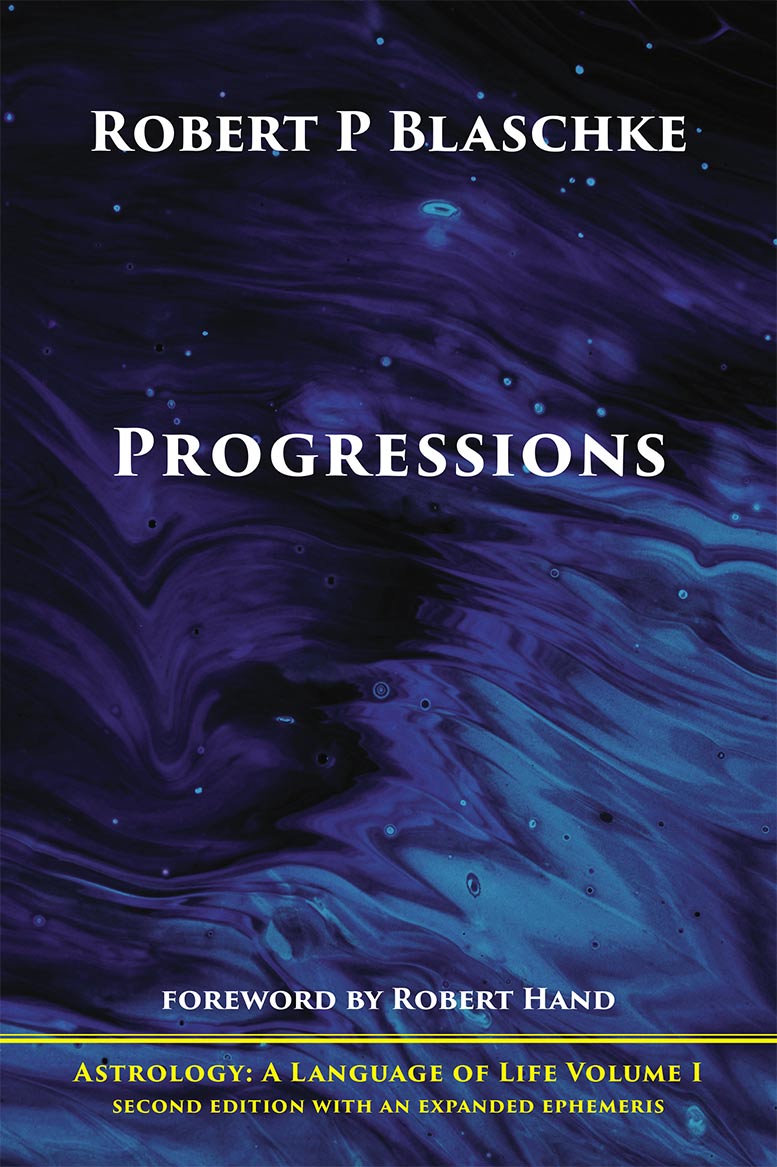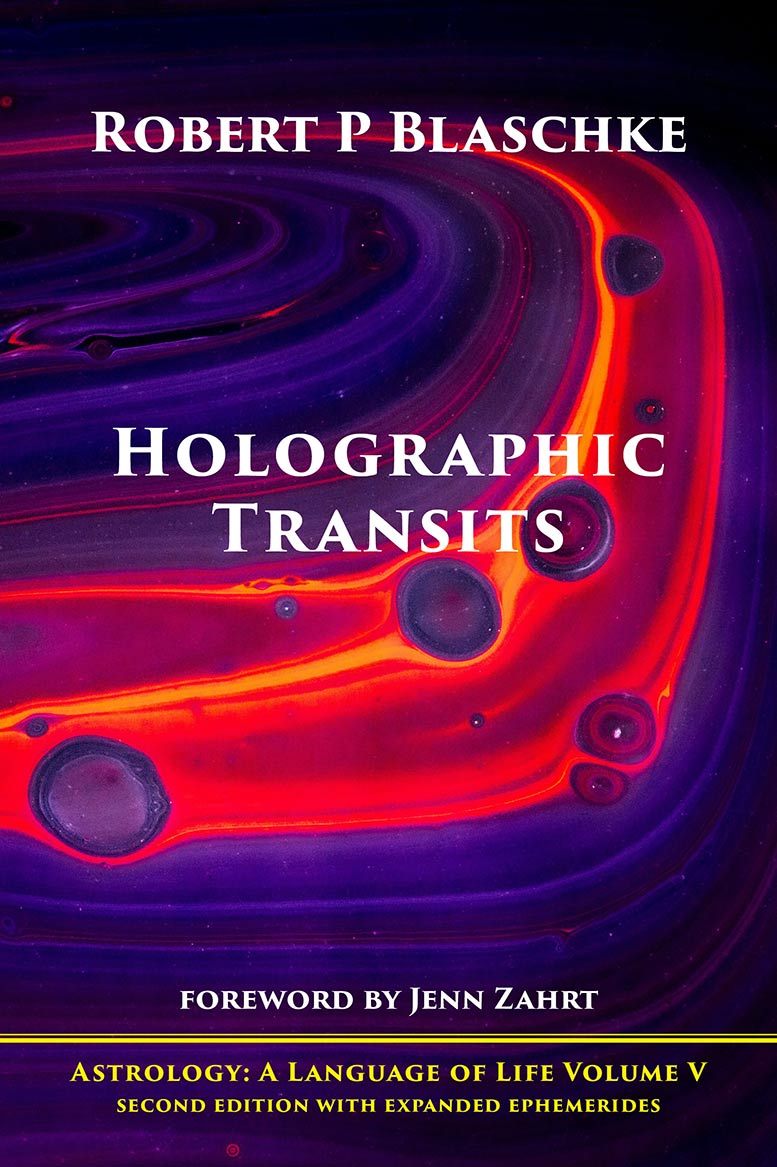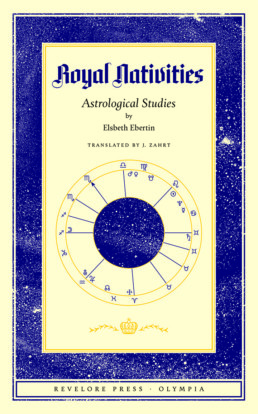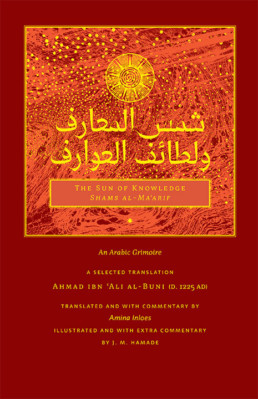Progressions
Astrology: A Language of Life, Vol. 1
by Robert P. Blaschke
204 pages/ 5 October 2024 / b&w paperback: 9781947544734
With an updated and expanded ephemeris (1920–2120), Robert Blaschke’s classic Progressions is an essential fixture on any serious astrologer’s bookshelf. Blaschke takes you well beyond secondary progressions and demonstrates how the time keys of tertiary and minor progressions interface with the secondary progressed time scale. In addition, you will learn about converse progressions, progressions and synastry, as well as a thorough check-list to help you apply this material in a consultation setting.
What it comes down to is that Blaschke’s book is strong enough at several different levels— practical, theoretical, esoteric—that one can find good information in it … I have a feeling that this book, due to its comprehensive treatment of the subject, could easily become a classic. — Kenneth Irving, American Astrology
This is the first of five volumes in Blaschke’s Astrology: A Language of Life series (new covers shown in gallery) to be re-released over the course of fall 2024.
Available on backorder
Acknowledgments
Foreword to the first edition by Robert Hand, PhD
Foreword to the second edition by Jenn Zahrt, PhD
Introduction
Chapter One
Astrological Rules, Laws & Definitions
Observation of Transits & Progressions
Carter’s Nativity Rule
Carter’s Law of Excitation
Leo’s Definition of Transits
Then Versus Now
Sensitive Degree Theory—Further Definitions
Chapter Two
Progression Theory
Progression Theory—Time
Progression Theory—Metaphysical
Multidimensional Levels of Progressions
Progression Theory—Lifetime
Chapter Three
Progressed Planetary Motion
Orbital Motion
Progressed Planetary Returns
Progressed Retrograde Motion
Prolonged Progressed Aspects
Progressed Motion of the Planets Summarized
Progressed Sun Movement
Progressed Moon Movement
Progressed Mercury Movement
Progressed Venus Movement
Progressed Mars Movement
Progressed Jupiter Movement
Progressed Saturn Movement
Progressed Uranus, Neptune & Pluto Movement
Calculating Progressions
Chapter Four
The Progressed Sun-Moon Relationship
Progressed Lunation Cycles
Esoteric Definitions of Spirit & Soul
Using the Sabian Symbols with Progressed Lunations
How to Calculate Progressed Lunation Time-Links
Chapter Five
Progressed Retrogradation & Stations
Overview of Retrograde Planets
Planets Progressing into Retrograde Motion
Planets Progressing into Direct Motion
Triple Aspects
Progressed Stationary Aspects
Chapter Six
Signs, Degrees, Houses & Angles by Progression
Progressed Sign Ingresses & Degree Analysis
Progressed Angularity & House Ingresses
The Progressed Horizon & Meridian
Using Decanates & Dwadashâmshas in Progressions
Chapter Seven
Discerning Significant Progressed Aspects
Preparing for the Client Consultation
Orienting Yourself to the Client’s Longer Cycles
Progressed Moon Aspects
Progressed Sun Aspects
Progressed Ascendant & Midheaven Aspects
Progressed Mercury, Venus & Mars Aspects & Retrogradation
Progressed Jupiter & Saturn Aspects & Retrogradation
Transits to Progressed Planets
Progressions Consultation Preparation Checklist
Chapter Eight
Miscellaneous Thoughts & Interpretive Strategies
Synastric Progressions
The Progressed Composite Chart
Progressed Time Twins
Converse Progressions
The End of Life Chart
Metaphysical Time Vector Intersection
The Progressed Void-of-Course Moon
The Physical Reality
The Emotional Reality
The Mental Reality
Planetary Contact Between Planes of Consciousness
The Consultation Preparation “Short List”
Final Thoughts
Appendix I
Planet Stations 1920–2120
Appendix II
Outer Planet Stations 1920–2120
Bibliography
Foreword to the First Edition (1998)
by Robert Hand, PhD
“In astrology there is one thing that we have enough of, books for beginners. This is understandable because astrology in modern times has always grown through attracting new enthusiasts and it is natural that most texts should be directed at them. However, this has caused one unfortunate condition to come into being. Much of what astrologers actually do is undocumented. We have a good core of written material which is rather basic. But the solid material that actually gives rise to astrology’s effectiveness as a practical tool in counseling is passed on mostly by word of mouth from astrologer to student, or in lectures and workshops. The result is that material is lost, sometimes reinvented by another, sometimes not.
“This book by Robert Blaschke on progressions is quite accessible to astrological readers of many levels, but it is not a beginner’s book. It does not just give the basics of progressions. It goes beyond that to provide a practical and theoretical foundation for integrating the various methods of progression into a single body of method in which each method has its place and there is as little overlap as possible.
“The core of the method is based on the three principal forms, common secondary, or day-for-a-year progressions, tertiary, or day-for-a-lunar-cycle progressions, and the so-called minor progressions which are based on a lunar cycle for a year. Conventionally these methods have been used as competing techniques for accomplishing roughly the same thing. The only question has been which is the most effective technique of the three? Whatever the answer might have been, the common practice is to use secondary progressions exclusively because it is the usually taught technique. The Church of Light has also taught that one should use secondaries in conjunction with minors. The minors are used to support the indications of the regular secondaries and possibly improve the timing of events because of the greater movement of the planets within that system. (I believe in fact that the term “minor progression” was coined by the Church of Light.) Tertiaries are the least familiar of the three on this continent, but those who have used them have been impressed with their effectiveness. Tertiaries were devised by the German astrologer E. H. Troinski around the period of the Second World War.
“Blaschke’s theory is that these three types of progression derive their usefulness from the following relationships. Secondaries are the result of the interaction of the Earth and the Sun (day and year) which in turn correlate to Matter and Spirit. Tertiaries are the result of the interaction of the Earth and the Moon (day and month) which correlate to Matter and Soul. And finally minors are the result of the interaction of the Moon and the Sun (month and year) which correlate to Soul and Spirit.
“However, this metaphysical and theoretical framework would be of little use were they not related to practical, applied astrology. While this book is solidly grounded in the author’s metaphysical position, it is not an airy, theoretical work devoid of practical application. While pursuing the logic and usefulness of the theoretical position, the book provides much that is useful and practical, and describes techniques of application which may not have occurred to even more advanced astrologers, material on planetary returns in the various systems, cycles that naturally arise out of the various systems and so forth. This is technically a very rich book and one which teaches a definite method which would not be difficult to apply in practice, although some readers may choose to use various parts of the whole system in order to test the overall efficacy of the system. The only warning I would give the reader is that one should make certain that in taking a partial approach to any system, one should be careful not to disrupt the integrity of the entire system in doing so. Sometimes a part of a whole is much less than one might expect with respect to the entire whole.
“A question which remains is this: Is the author right, and are his methods for applying progressions the best that there are? At this point I do not feel qualified to give an answer. I do know that my theoretical and metaphysical positions are somewhat different from his. But what I do have to say is that I applaud him for putting the method out whole and entire so that the astrological community can judge it, and that he has done so in book form so that the method cannot be distorted or altered by the more faulty transmission of the word of mouth. Whatever may be my, or anyone else’s, final judgment on Blaschke’s methods, this book should advance the study of progressions in astrology on both the practical and theoretical level and for this we owe Robert Blaschke a vote of thanks.”
Robert Hand, PhD
December 1998
Reston, Virginia
Foreword to the Second Edition (2024)
by Jenn Zahrt, PhD
“Twenty-six years after its first publication, Robert Blaschke’s Progressions remains a definitive work on the theory and application of progressing natal charts. It was in this book that I first came across the concepts of tertiary and minor progressed time scales, converse progressions, and progressed time twins. These techniques grip me, and I see them coming to life all around me through my relationships. I happen to know an uncanny amount of people born within a month of me, and the secondary direct and converse progressions unfurl in a symphony of synastry. Astrology chooses you, and chooses you to transmit its living wisdom. It clearly chose Robert, and his work has been a major inspiration for my own, and that of so many astrologers in our community.
“Progressions is the first book in his five-volume Astrology: A Language of Life series. Robert had two more books planned before cancer took him from this world far too soon. As his great friend Mary Plumb wrote in a blog post for The Mountain Astrologer, “he passed away peacefully on January 18, 2011.” He was 57.
“Through his Earthwalk School of Astrology, Robert proudly bootstrapped his own publications. This means he had to maximize every millimeter of the page to squeeze the most value out of the print run. Thanks to the generous permission of Carol Cilliers Blaschke, Robert’s books will be re-typeset and updated in second editions through Revelore Press to allow ample breathing room for his magnificent ideas to shine through. As pertains to Progressions, the ephemeris in the first edition provided data from 1920–2010; the second edition expands the ephemeris by another century to make this book a complete resource for decades to come.
“At the 2012 United Astrology Conference in New Orleans, Robert was posthumously nominated for—and won—the Marion D. March Regulus Award for Discovery, Innovation, and Research. When you read his volumes of Astrology: A Language of Life, you will know why.”
Jenn Zahrt, PhD
July 2024
Olympia, Washington
Robert P. Blaschke (1953–2011), in practice from 1979–2009 and founder the Earthwalk School of Astrology in 1992, continues to be an internationally respected professional astrologer, known for his consulting, lecturing, and teaching prowess. He lectured at regional and international astrology conferences in the US, Canada, Australia, South Africa, and Serbia. In 2012, Blaschke posthumously won a Regulus Award for Discovery, Innovation and Research. His critically acclaimed five-volume Astrology: A Language of Life series remains a definitive contribution to the astrological field and to the advancement of serious astrologers worldwide.
Additional information
| Weight | .8125 lbs |
|---|---|
| Dimensions | 9.21 × 6.14 × .432 in |




















Reviews
There are no reviews yet.